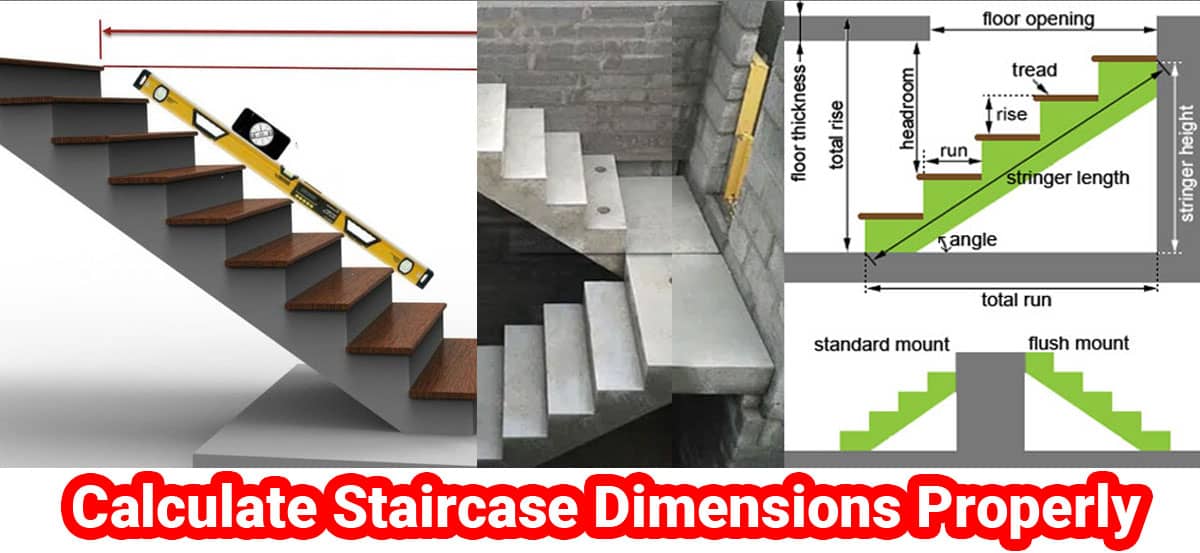Calculate Staircase Dimensions Properly

Staircase measurements are a significant piece of staircase security. This page covers the entirety of the significant staircase estimations and a slip-up to keep an eye out for! Staircase dimensions are an important part of staircase safety. Here is in this article we cover all of the important staircase measurements and mistakes not to ignore.
Treads and Risers
The tread size (min 10ins/25.4cm) is directed by the normal grown-up foot size, despite the fact that it isn't important to have the option to accommodate your whole foot on a tread all together for strolling up the stairs to be both agreeable and safe.
The riser height (max 7"ins/19.7cm) is constrained by the manner by which we descend the stairs. Things being what they are, you could move up definitely more than 7" inches effectively and you could descend unquestionably more than 7" inches effectively on the off chance that you are confronting in reverse. The rungs of a stepping stool are set at progressively like 12ins/30cm separated. However, we go down the stairs confronting advances, and it's this that restrains the riser size to being a lot smaller.
The most extreme measurement between balusters is 6ins/15.2cm. I don't know for certain what this depends on, however I'm thinking the thought is that it shouldn't be anything but difficult to get a foot or arm caught in the middle of a baluster. Having said that there are a lot of staircase plans where the external handrail has greater holes or is missing through and through.
Staircase estimations
To compute the run of the stairs, just duplicate the tread measurement (guarantee this does exclude the nose - see underneath) by the quantity of steps.
To figure the rise of the stairs, increase the rise measurement by the quantity of steps.
Or on the other hand, to turn out what number of steps you need, take your ceiling height and separation by suppose 16 to begin with. On the off chance that you think of a riser that is a sensible size and not exactly the greatest measurement shown above you need 16 stages. Have a go at partitioning your ceiling height by different numbers until you concoct a riser measurement that works.
Tread Nose
The nose makes the tread progressively agreeable to move in socked feet or bear feet. It mustn't hang excessively or it turns into a stumbling peril. A nose isn't a fundamental piece of a tread. There are a lot of staircases, especially increasingly contemporary structures that are built without a nose.
Ceiling Height
The outline underneath shows the base ceiling heights required. These are particularly the base and a ceiling height moving toward the normal ceiling height is progressively perfect.
The base staircase width is equivalent to the base course zone width of 3ft/0.91m.
Under staircase measurements error
We have run over a few homes where this staircase configuration botch has been made.
When working out where to put a door that fits under the stairs, the undeniable activity is to take the door height and work out what number of steps need to precede the door to fit underneath. In any case, that would be an error in such a case that there's any stair skirt or trim around the door, the embellishment and the skirting will cover.
Remember to factor in the stair skirt and any door forming when working out where to situate a door under the stairs.
Staircase measurements mistake where the situation of the door doesn't consider the door embellishment and stair skirt.
Video Source
